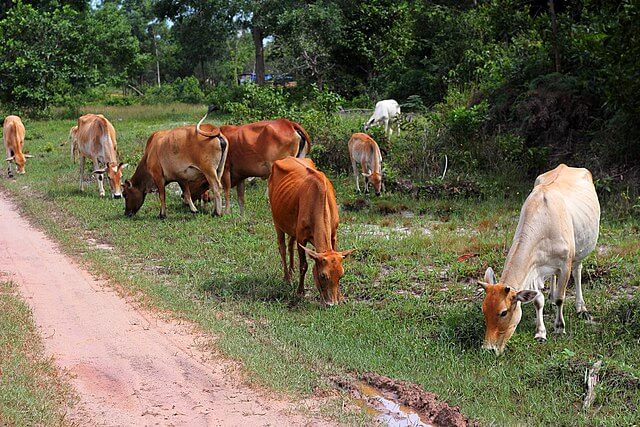
A groundbreaking study conducted by researchers from the University of Washington suggests that methane-eating bacteria, scientifically known as methanotrophs, could potentially slow down the alarming rate of global heating.
Methane, a potent greenhouse gas, is emitted from a variety of sources, including energy (natural gas and petroleum systems), industrial processes, agriculture, land use, and waste management.
The research team, led by Mary E Lidstrom, has proposed an innovative approach to mitigate methane emissions. This approach involves harnessing the unique abilities of methanotrophs to naturally convert methane into carbon dioxide and biomass. These bacteria effectively “consume” methane, removing it from the atmosphere while using a portion of it to create sustainable protein-rich biomass.
One particularly promising strain of methanotroph, known as methylotuvimicrobium buryatense 5GB1C, has demonstrated the ability to efficiently remove methane, even when it is present in lower concentrations. If widely adopted, this technology could significantly contribute to slowing down global heating.
Methanotrophs typically thrive in environments with high methane concentrations, ranging from 5,000 to 10,000 parts per million (ppm). In contrast, the Earth’s atmosphere contains a significantly lower level of methane, about 1.9 ppm. However, certain sources, such as landfills, rice fields, and oil wells, release methane at higher concentrations, approximately 500 ppm.
“Bacteria that rapidly eat methane at the higher concentrations found around cattle herds, etc could make a huge contribution to cutting methane emissions, especially from tropical agriculture,” said Euan Nisbet, professor of Earth sciences at Royal Holloway, University of London, commenting on the findings of the study.
The exceptional methane consumption rate exhibited by methylotuvimicrobium buryatense 5GB1C can be attributed to its low energy requirements and a strong affinity for methane, which is over five times greater than that of other bacteria. These characteristics make it a particularly valuable asset in the quest to reduce methane emissions.
“The bacteria oxidise the methane to CO2 (a much less powerful greenhouse gas) and so you can even use the exhaust to pump into greenhouses and grow tomatoes,” said Nisbet.
“The biggest barrier to implementation now is technical: we need to increase the methane treatment unit 20-fold. If we can achieve that, then the biggest barriers become investment capital and public acceptance. We believe we could have field pilots tested within three to four years, and scale up would then depend on investment capital and commercialisation,” said Lidstrom.
Methane is a critical target for emissions reduction efforts, especially in the agricultural sector, where it is primarily produced from livestock manure and gastroenteric releases. Methane is a potent greenhouse gas, with over 85 times the warming potential of carbon dioxide during the first 20 years after it enters the atmosphere. Its rapid increase in atmospheric concentration over the past 15 years, contributing at least 30% to total global heating, underscores the urgency of addressing this issue.
Efforts to reduce methane levels are essential, and international agreements, such as those made at COP26, aim to combat this growing problem. However, methane-eating bacteria present a unique solution that complements emission reduction strategies. To implement this technology on a mass scale, thousands of high-functioning reactors will be required.
“This may be daunting but if our survival depends on lowering atmospheric methane now the cost may be a lower priority in allocating resources. Lack of political will and understanding in the private and public sectors about the urgency of the need to reduce methane now will make global heating even worse in coming years,” said Mary Ann Bruns, professor of soil microbiology at Pennsylvania State University.
Crucially, the bacterial technology proposed by Lidstrom’s team does not result in the release of nitrous oxide (N2O), a greenhouse gas with a heating potential ten times greater than that of methane. This sets it apart from some emissions reduction strategies that inadvertently enhance bacterial activity and lead to increased N2O emissions.
Recent projections suggest that removing 0.3 to 1 petagrams of methane by 2050, a reduction of 0.21°C to 0.22°C in global temperatures, can be achieved. This could have a significant impact when combined with other emissions reduction strategies, offering a ray of hope in the fight against the climate crisis. The study emphasizes that both methane removal and emissions reduction strategies are essential to meet climate targets, underscoring the critical role that methane-eating bacteria may play in our efforts to combat global heating.
——————————————————————————
At Natural World Fund, we are passionate about stopping the decline in our wildlife.
The decline in our wildlife is shocking and frightening. Without much more support, many of the animals we know and love will continue in their decline towards extinction.
When you help to restore a patch of degraded land through rewilding to forests, meadows, or wetlands, you have a massive impact on the biodiversity at a local level. You give animals a home and food that they otherwise would not have had, and it has a positive snowball effect on the food chain.
We are convinced that this is much better for the UK than growing lots of fast-growing coniferous trees, solely to remove carbon, that don’t actually help our animals to thrive.
This is why we stand for restoring nature in the UK through responsible rewilding. For us, it is the right thing to do. Let’s do what’s right for nature!
Donate today at https://naturalworldfund.com/ and join in the solution!

